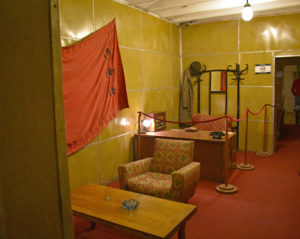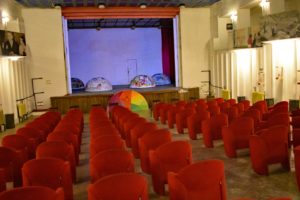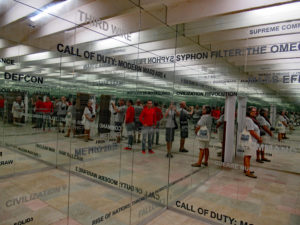Whilst staying in Albania’s capital Tirana, we visited two relatively new ‘museums’ to learn about the country’s communist period from 1944 to 1992
“Bunk’Art 1”:http://bunkart.al/1/home, which opened in 2014, is dedicated to the history of the communist army and the daily lives of Albanians. “Bunk’Art 2”:http://bunkart.al/2/home, which opened two years later, reconstructs the history of the Albanian Ministry of Internal Affairs and reveals the secrets of ‘Sigurimi’, or secret police.
We’d already visited “Bunk’Art 2”:https://www.silvertraveladvisor.com/review/attraction/202084-review-bunk-art-2 in the city centre. Bunk’Art 1 is situated inside the atomic bunker of the dictator Enver Hoxha, on Tirana’s outskirts. As it was very close to the “Dajti Ekspres Cable Car”:https://www.silvertraveladvisor.com/review?id=202009, we combined it with our trip up into the hills.
Having driven through a long, arched tunnel and parked, we were pleasantly surprised to find that as we were over 60 (no evidence required), our tickets were 300 Lek/£2.20, rather than the standard 500 Lek or 700 Lek with audio guide. The latter isn’t recommended as there are so many information panels and it took us 2 hours to get around without, so would have taken longer with the audio guide.
A long slope took us underground to the first of several very thick doors before we arrived at the decontamination area. Everyone would have had to pass through this and shower, to avoid possible contamination from chemical weapons or radioactivity. Having looked at the map, we set off down an incredibly long corridor with 106 small rooms off it, although not all were open. Those that were, had a panel outside in both Albanian and English explaining the concept of the room, and then once inside, individual exhibits were labelled. Signs abounded saying that if the power failed, we should stay where we were and not panic as there was a generator and the electricity would soon return.
Rooms were dedicated to the German and Italian invasions, explaining the occupation history through photos and documents. In contrast, another told of the role played by the British with Dame Vera belting out ‘We’ll meet again’.
Albania is synonymous with bunkers and we’d seen many on our trip. Around 173,000 bunkers were built between 1975 and 1983 at a huge loss of life and we learned that the theodolites had been supplied by China. There were designs on the walls which had been declassified as recently as 2014, with the advent of the Bunk’Art projects. Another room explained how the dark and damp environment of the obsolete bunkers are ideal habitats for bats, and a number of protected species inhabit them.
There are always two sides to every story. We saw pictures of religious clerics murdered simply for their religion, and religious buildings destroyed with video footage of a minaret tower being destroyed by a single person. Others displayed the positive elements of communism e.g. good education and high literacy rates. Physical education was held in high regard, as it kept people constantly prepared and there were lots of photographs of school charts, medal ceremonies etc.
One room displayed types of gas masks including one for horses, whilst another was set out like a typical living room during the communist period. The furniture market was state owned and as the furniture produced was identical, all homes looked the same. The room had a black and white TV which could only be purchased with permission from the party. Although they were modified in the factories to prevent them from receiving foreign channels, people found a way to adapt them. Video footage of Enver Hoxha’s funeral was showing and we learned how people felt ‘obliged’ to cry.
Other rooms had quirky, modern art installations and one with mirrored walls on all four sides, produced weird reflections of us.
Enver Hoxha’s personal rooms, the biggest and most luxurious in the bunker, included his living area, bedroom, bathroom and room for his secretary. Rather than being concrete lined, the walls were covered in a special type of fibre made to look like panelling. The room of the First Minister was similar, but naturally slightly smaller.
An Assembly Hall, built between 1972 and 1978, was designed to host government meetings in the event of war. Now it displayed medals awarded for heroism around the room and red velvet theatre style chairs in the middle.
We finally exited into warm sunshine. The visit entails a lot of walking, can be gloomy and get very cold. Bearing in mind the size of some of the rooms, we were glad there were only a few other visitors as it could get very crowded.










